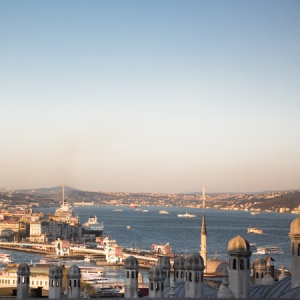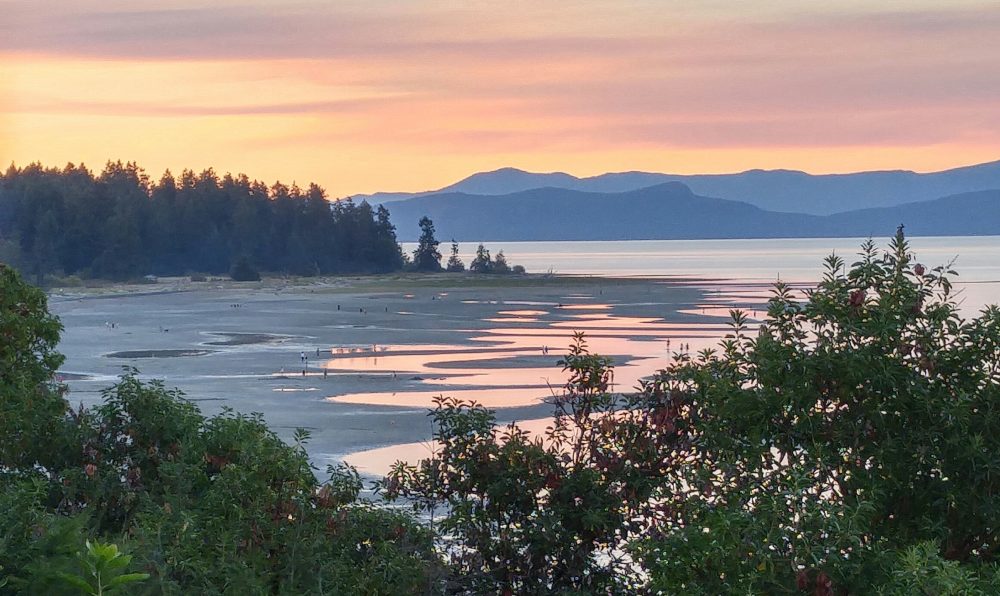
Asia as seen from the European side of the Bosphorus
The inauguration of the rail tunnel under the Bosphorus this past Tuesday brought to mind my own trip between European Istanbul and Asian Istanbul eight years ago. At that time, the only way across the Bosphorus Strait was via two bridges. My husband and I were heading to Turkey’s capital, Ankara, by the Istanbul-Ankara evening express train and needed to get to the train station which is located on the Asian side of the city. We crossed the Bosphorus via the Fatih Sultan Mehmet Bridge. I still recall the thrill I felt when our van reached the other side and I saw the sign, “Welcome to Asia.” In less than an hour’s drive from our hotel in the Sultanahmet district of European Istanbul, we had crossed over to an entirely different continent, Asia. It was mind-boggling at the time!
The construction of a tunnel under the Bosphorus had been the dream of the Ottoman ruler Abdoul Mejid back in 1860. Turkey’s current prime minister, Recep Tayyip Erdogan, revived the sultan’s scheme as one of his ambitious mega-projects for Istanbul. That dream became a reality on October 29th, the 90th anniversary of the founding of the Republic of Turkey. The first sea tunnel to connect two continents is called the Marmaray Tunnel, a conflation of the Sea of Marmara and the Turkish word for rail, ray. At the grand opening of the rail tunnel, Erdogan is said to have described the Marmaray as a “project for the whole of humanity,” a tunnel which “connects past and future, as well as connecting continents.” Erdogan’s hyperbole was not over-the-top. The opening of a rail tunnel 200 feet below the sea bed of the Bosphorus linking Europe and Asia is a truly significant engineering feat, one rich in symbolism. But, as for the new tunnel finally “connecting continents,” that’s true only in a physical, not a cultural, sense.
On my trip to Turkey, as the plane made its descent into Istanbul, I sat “glued” to the window, fascinated by the ancient city that loomed ever larger below me. There was Justinian’s magnificent Aya Sofya, the Blue Mosque, the Mosque of Suleyman the Magnificent, other mosques whose names I did not yet know. I had never before seen a city like this before! Today, magnificent mosques are no longer unique to Istanbul. Immigration from the Muslim East is changing the face of post-Christian Europe. France is home to Europe’s largest Muslim population. Yet, while 64% of the population identifies as Roman Catholic, only 4.5% are practicing Catholics. In short, France has too many churches, too little money, and most crucial of all, too few worshippers. France’s Muslims, on the other hand, are growing in numbers, but have little space for prayer. Inevitably, many of France’s churches end up being sold, and in many cases, Muslims are the buyers. It has been estimated that Europe’s churches are being bought up and turned into mosques at the rate of two per week.
It’s the same story in Germany, home to Europe’s second largest Muslim community. Since 2000, more than 400 Roman Catholic churches have been closed and another 700 will likely be closed in the coming years. Over 100 Protestant churches have been closed as well. The Muslim community, in stark contrast, has built 40 mega-mosques that can accommodate over 1000 worshippers at one time.
The situation is similar in the UK where Islam has replaced Anglicanism as the dominant religion. At least 10,000 churches have been closed in Britain since 1960 and another 4,000 are set to be closed by 2020.
One vivid recollection of my time in Istanbul is that of hearing the muezzin’s plaintive, but not unpleasant, call to prayer, known as the adhan, particularly the call to prayer in the still-dark, early hours of the morning. This too is no longer unique to the East. In June of this year, a mosque in North Rhine-Westphalia, Germany began sounding the muezzin’s call to prayer from an outdoor loudspeaker mounted on the roof of the mosque, five times a day, seven days a week. Several other mosques have obtained approval to follow suit. Europe’s Muslim population wants to be able to observe Muslim holidays as well. Several cities in Germany, such as Hamburg and Bremen, have given Muslim workers and students these days off. Muslim immigration to the West has transformed–indeed, continues to transform–the face of Europe. And it’s not just immigrants from the East pressing for change. The UK’s Prime Minister David Cameron has just announced his intention for the UK to be the first non-Muslim nation to introduce a shari’a compliant bond. Cameron would like London ultimately to challenge Dubai’s position as the world centre of Islamic finance.
For me, the newly-opened Marmaray evokes images of surging crowds of passengers heading in opposite directions, some hurrying east towards Asia, others pushing their way west in the direction of Europe. It’s obvious to many which way Europe is heading. But what about Turkey? Under Erdogan’s leadership, Turkey is looking less and less like the secular republic established by Atatürk. Just the other day, four female members of the Turkish parliament defied the law banning headscarves (a law instituted by Atatürk), a seemingly small infraction, but one with great political significance. Turkey, Western observers note, is re-Islamizing. The influence of Islam on post-Christian Europe and Turkey is growing. Does this mean they have a common destination?
